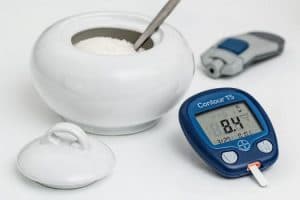sometimes, you just can’t say it better yourself. so when i read this article, and then this subtitle, i had to pass it on…in its entirety. but first a bit of personal note.
in 1986, when i was working in cahoots with my colleague to start a personal training center, i spent half the nite thinking of a cool name for it. then what the name would mean. i wanted to be able to seamlessly use the name in the advertisement. so, S.T.E.P.S. was born = scientific training and exercise prescription specialists. wow, what a mouthful, but it apparently worked. here we are, still helping others develop healthy bodies and healty lifestyles. may the STEPS we’ve taken help others take STEPS to better living.
enough…..now, this article has to read and appreciated for what it says. it’s time we all take steps to better living, which will help with lower medical and health care costs all the way around. so read on………
From HealthNewsDigest.com
Guest Columnist
Americans Remain a Step behind the World – Actually Thousands of Steps Behind
By
Jan 25, 2012 – 5:53:32 PM

(HealthNewsDigest.com) – If you read this standing up, instead of sitting down, you will expend about 20% more energy. If you read it while walking slowly, you’ll expend 300% more energy. These numbers tell an important part of the weight control story. Lots of activity can greatly improve weight loss and the maintenance of weight loss. Remaining sedentary, by contrast, increases the risk of weight gain.
Our obesogenic culture encourages sedentary living. Some recent studies have helped quantify this aspect of our obesogenic culture by describing to what degree Americans take fewer steps than people in other countries and which Americans take more steps (Older? More overweight? Women vs. men? People from the Midwest vs. Northeast?) The rationale for these studies includes the desire to understand the nature of the problem in more detail – and to use that understanding to find better ways of changing it.
Which Americans Move More?
Two of Wellspring’s Scientific Advisory Board members, Drs. Holly Wyatt and James Hill, and their colleagues recently researched activity levels in the United States. These researchers asked people across the country (ages 13 and up), a good representative sample of the population, to wear pedometers for two days. They then collated this data and examined factors associated with relatively high and low levels of activity. Before looking at the graph below, try to guess which regions of the country had the most and least activity people.
Now, look at the following graph and see if you were right. People in the upper Midwest/Central Plains and the Southeast took 1,000 steps per day or more, on average, less than the people in the most active region, the Rocky Mountains. Guess which state has traditionally shown the lowest level of obesity in the USA? Colorado – the high steppers in the heart of the Rocky Mountain region. Now guess the region with the highest rates of obesity? The Southeast gets that distinction, among the least active areas in the USA. The parallels suggest the obvious – high activity levels may help prevent excess weight gain and low activity levels may contribute to weight gain. Notice how the following map of obesity rates in the USA shows these parallels between step levels and excess weight – Colorado is the skinniest state and the Southeast has the highest rates of obesity.
Drs. Wyatt and Hill and their colleagues confirmed this pattern. Their obese participants averaged 4,330 steps per day versus the 5,864 steps per day of their non-overweight participants. This coincides well with many studies that have demonstrated that weight controllers who maintain relatively high levels of activity after losing weight (like 10,000 steps per day on average) fare far better than weight controllers who become more sedentary after losing the weight (2,3).
They also found that men averaged more steps than women (by an average of 500 per day) and that older adults (50+) averaged fewer steps than younger and middle aged adults (5,843 for 18-29 year olds versus 4,027 for 60+). Women develop obesity at greater rates than men and obesity tends to increase throughout the lifespan, especially for women. Note the parallels in these statistics, as well.
Do Americans move less than people in other countries and less than we used to move a generation ago)? Yes!
The graph below shows that Americans averaged 5,117 steps per day, far fewer steps than our counterparts in other relatively affluent westernized countries. All of these studies included representative samples of the people from their countries and used valid research designs and methods.
In the case of the American sample, and probably the others, the average number is actually inflated – higher than the actual number of steps taken by Americans. This happened because the participants in the study volunteered to wear pedometers and contribute their data. Volunteers for a study on activity levels tend to be more active than those who do not volunteer. Also, just wearing a pedometer increases average step counts significantly. So, in reality, Americans probably average closer to 4,000 steps per day. That is about an hour of brisk walking per day below the 10,000 standard that we and other health promoting organizations recommend. Other studies using pedometers among people who do not use cars and rely more on manual labor (the Amish people in Pennsylvania, for example) also show that we’re probably less than half as active as we used to be 100 years ago.
Taking Steps to Take More Steps
We may not be able to catch up to Switzerland tomorrow, but we can move in that direction. Here are a few suggestions for things you can do to chip away at our obesogenic culture – and at a very local level – in your life and the lives of people you know:
Get and give pedometers. If you wear a pedometer every day, how about getting pedometers for all members of your family? How about pedometers as holiday presents for friends, family members and co-workers? Just wearing pedometers increases step counts significantly. Wearing them + setting goals (e.g., 10,000 steps per day) increases step counts even more. These devices work quite well and you can find many good ones for $14-20. On this website (http://www.pedometersusa.com/high-accuracy-pedometer.html) you can choose between a Yamax Digiwalker, an Accusplit Digiwalker, or an Omron HJ150. All work well and are easy to use.
Get a dog. Dogs help people move, as well as provide unconditional love and affection.
Get in the habit of talking about steps with you friends and family members. Hundreds of Wellspring families do this. They park their cars further away from their destinations to “get more steps.” They walk to restaurants and movies in their neighborhoods – or park their cars just part of the way. They compare their step counts every day and even track them on calendars posted in kitchens or hallways. Making steps part of the conversation in everyday life will make a difference. Just imagine if millions of Americans did this every day.
Make steps part of every child’s goals. Your children have chores and homework – and often get allowance or privileges contingent upon completion of these things. Consider adding step goals to that list.
Daniel S. Kirschenbaum, Ph.D., ABPP -President
WellSpring / CRC Health Group














